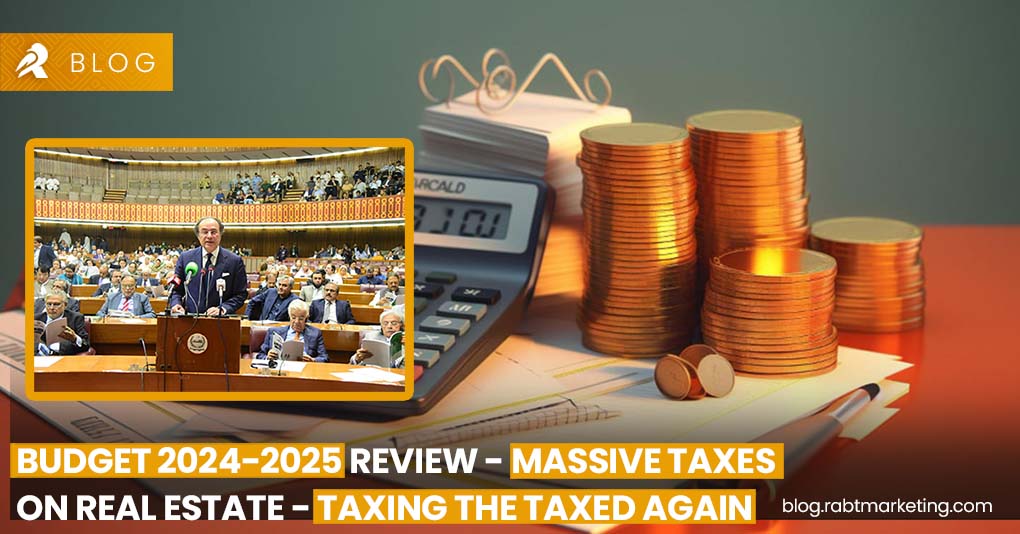Key Notes
- Budget aims to increase tax revenues by over 40%, reaching Rs12.97 trillion.
- Introduces Rs2.2 trillion in new tax measures, including higher personal taxes and expanded consumption taxes.
- Targets 12% inflation and 3.6% GDP growth for nominal revenue expansion.
- Middle-income households and skilled workers face higher taxes, reducing spending power and causing emigration.
- Corporate and sales taxes to rise, reducing reinvestment incentives and increasing inflation.
- Higher withholding taxes may drive more business into informal markets without improving compliance.
- Tax policy disproportionately affects vulnerable households and relies heavily on corporations and salaried individuals.
- Budget fails to broaden the tax base, risking pushing businesses into the informal economy and limiting sustainable growth.
Prime Minister Shehbaz Sharif’s new budget for the next fiscal year sets ambitious targets, aiming to meet IMF demands for a larger and longer bailout to maintain Pakistan’s recent economic stability.
The budget aims to increase government tax revenues by over 40%, from Rs9.25 trillion this year to Rs12.97 trillion next year. This is a significant jump compared to the average annual increase of 20% over the last five years and an estimated 30% increase this year.
To achieve this, the budget introduces additional tax measures worth Rs2.2 trillion (1.8% of GDP). These measures include expanding consumption taxes, significantly increasing personal taxes on both salaried and non-salaried individuals, eliminating tax exemptions for various sectors, bringing some untaxed incomes into the tax net, tightening regulations on non-filers, and raising the petroleum taxation by Rs20 per litre to Rs80. The remaining Rs1.5 trillion increase in tax revenues is expected to come from a nominal expansion in the economy, with a targeted inflation rate of 12% and GDP growth of 3.6%.
The people keep getting taxed more, while those who don’t pay taxes only face slight increases in costs, making business more expensive. With an expected GDP growth of 3.6%, the budget is cautious and doesn’t expand the tax base much, despite calls for a shift from consumption to investment.
The budget aims for a 37.8% increase in tax revenue and a 10.4% tax-to-GDP ratio, which is ambitious given inflation around 15%. Income taxes are expected to rise by 48%, impacting the salaried class whose real incomes have dropped by over 30% in five years. Higher taxes reduce their income further.
Middle-income households face more taxes, reducing their spending power and pushing skilled workers to leave the country. While real capital is stuck in areas like real estate, losing skilled workers due to high taxes is harmful.
The budget continues to focus on current taxpayers and increases corporate taxes for export industries, reducing reinvestment incentives. Sales tax is set to rise by 36%, and the Petroleum Development Levy by 33%, which increases costs and inflation. Higher withholding taxes may not convert non-filers to filers but will likely increase costs for consumers, encouraging informal cash markets.
The tax policy is flawed, as higher withholding taxes don’t improve compliance. The budget relies heavily on corporations, salaried individuals, and indirect taxes, affecting vulnerable households more than affluent ones.
Despite some hope for stability and plans to privatize loss-making entities, the budget fails to broaden the tax base, burdening the formal economy and encouraging the informal economy. Without significant reforms, the overtaxed segments will continue to struggle, limiting sustainable growth.
The Final Words
In summary, the federal budget is not so much hopeful and encouraging. It doesn’t address key issues like expanding the tax base. It risks pushing more businesses into the informal economy and doesn’t effectively encourage investment, complicating efforts for sustainable growth.
For more updates, click here
Stay tuned with Rabt Marketing.

